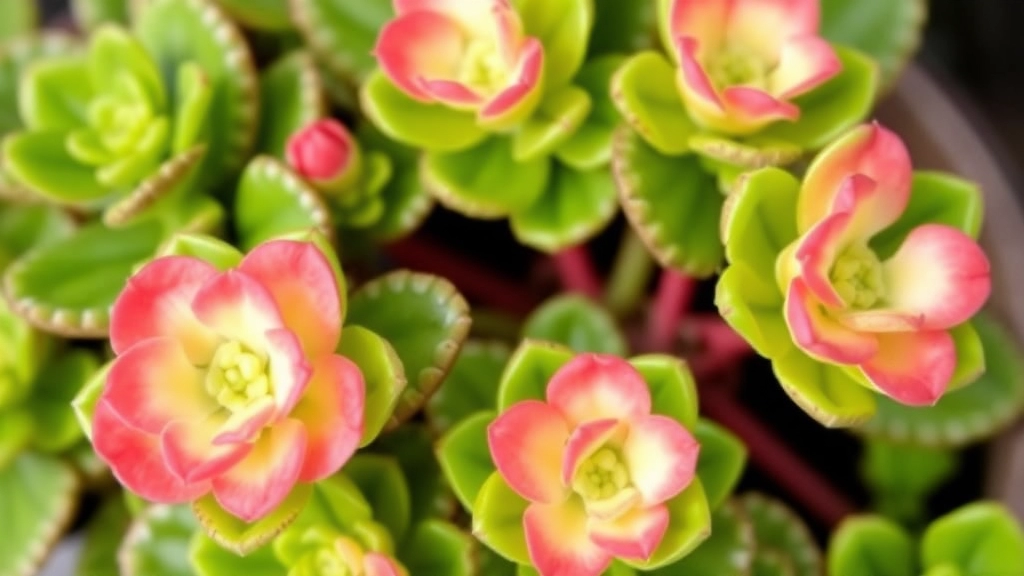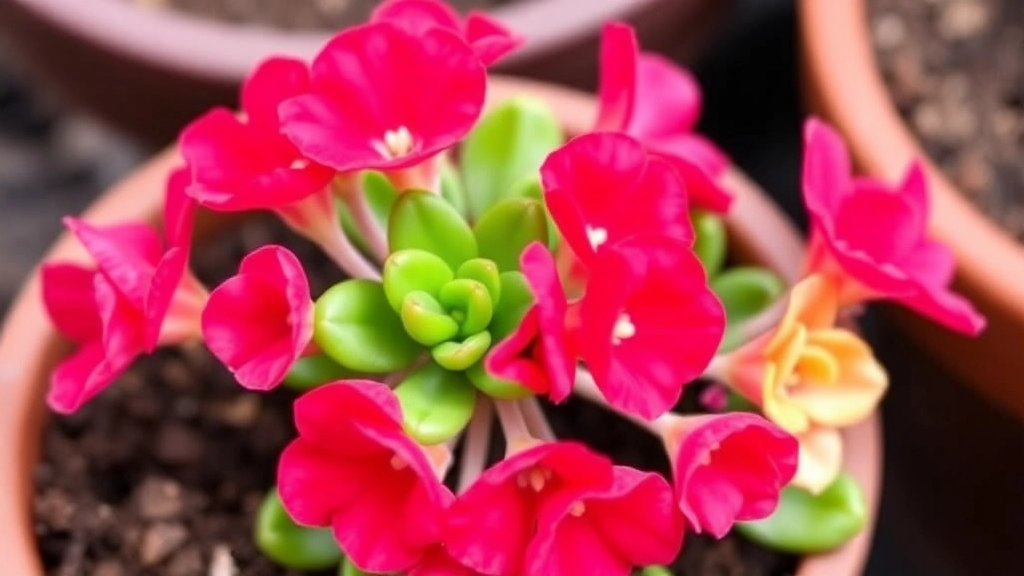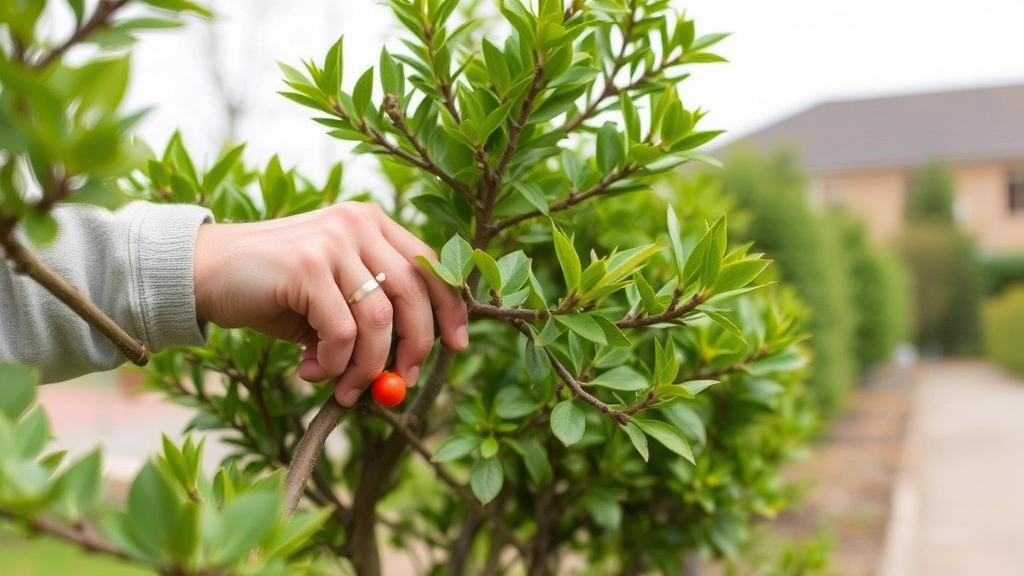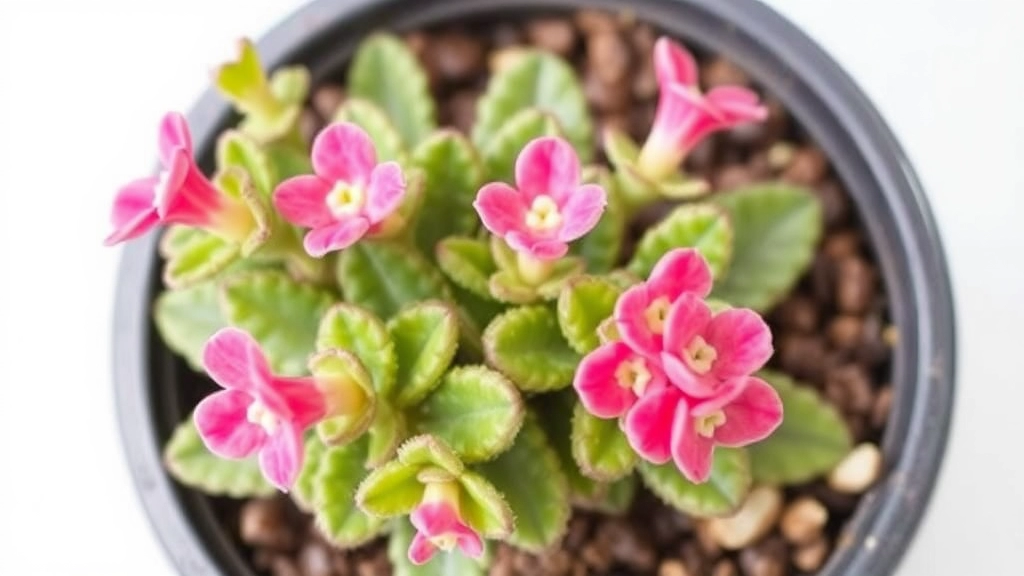Flower Dust Plant Kalanchoe Pumila
If you’re looking to add a unique and resilient plant to your collection, the Flower Dust Plant Kalanchoe Pumila is a fantastic choice. This succulent, known for its striking frosty appearance, thrives in bright light and well-draining soil, making it perfect for both indoor and outdoor settings. Let’s dive into the essential care tips to keep your Kalanchoe Pumila healthy and vibrant.
Characteristics
First, understanding the characteristics of the Flower Dust Plant is key. This succulent features silvery, dusted leaves and clusters of pinkish-lavender flowers that bloom in the spring. To ensure optimal growth, place your Kalanchoe Pumila in a spot with plenty of sunlight and water it sparingly to avoid root rot. With the right care, this plant can be a stunning addition to your garden or home.
Characteristics of Kalanchoe Pumila
Are you curious about the unique features of Kalanchoe Pumila? This captivating succulent, often referred to as the ‘Pumila’ or ‘Mother of Thousands’, is a delightful addition to any plant collection.
Overview
Kalanchoe Pumila is known for its striking appearance and resilience. Here are some key characteristics:
- Leaves: The leaves are fleshy, rounded, and have a soft, grey-green hue. They often feature a slight velvety texture, giving them a unique charm.
- Flowers: This plant produces clusters of small, tubular flowers. These blooms typically showcase vibrant colours, ranging from pink to red, and can attract pollinators, enhancing your garden’s biodiversity.
- Growth Habit: Kalanchoe Pumila is a compact succulent that can reach a height of about 30 cm (12 inches) and spreads outwards, making it an excellent choice for ground cover or container gardening.
- Hardiness: This succulent is quite hardy and can withstand periods of drought, making it suitable for beginners and busy plant enthusiasts alike.
- Toxicity: It’s important to note that Kalanchoe Pumila is toxic to pets if ingested, so keep it out of reach of curious animals. For more information on the toxicity of Kalanchoe plants, you can read about whether Kalanchoe is poisonous to dogs.
If you’re interested in expanding your collection, consider exploring the best deals for buying Kalanchoe Mother of Thousands online.
Ideal Growing Conditions for Kalanchoe Pumila

So, you’ve got your Kalanchoe Pumila, and now you’re wondering where to put it so it thrives.
Light Requirements
This little beauty loves the sun! Ideally, aim for:
- Bright, indirect sunlight
- A few hours of direct sunlight each day
Too much shade? It might get leggy and lose its charm.
Temperature Preferences
Kalanchoe Pumila is a fan of warmth. Here’s what it needs:
- Optimal range: 18°C to 24°C (65°F to 75°F)
- Avoid cold drafts and sudden temperature drops
If it’s too chilly, you might find it sulking.
Humidity Levels
This plant isn’t picky about humidity, but it prefers moderate levels.
- Ideal humidity: 40% to 60%
- If your home is dry, consider a pebble tray or a humidifier.
Air Circulation
Good airflow is key.
- Avoid overcrowding with other plants
- Ensure it’s in a spot where air can circulate freely
Watering Needs
When it comes to caring for Kalanchoe Pumila, understanding its watering needs is crucial. Overwatering can lead to root rot, while underwatering can cause the leaves to shrivel.
Key Considerations:
- Frequency: Water your Kalanchoe Pumila every 2-3 weeks during the growing season (spring and summer). In the dormant season (autumn and winter), reduce watering to once a month.
- Soil Moisture: Always check the top inch of soil. If it feels dry, it’s time to water. If it’s still moist, hold off for a few more days.
- Water Quality: Use room temperature water. Avoid hard water as it can lead to mineral buildup in the soil.
- Drainage: Ensure your pot has drainage holes. This prevents water from sitting at the bottom, which can cause root rot.
- Humidity: Kalanchoe Pumila prefers lower humidity levels. Avoid misting, as this can lead to excess moisture on the leaves.
- Signs of Overwatering: Yellowing leaves or a mushy stem are indicators that you may be overwatering.
By mastering these watering techniques, you can help your Kalanchoe Pumila thrive beautifully. For more detailed care guides, check out our comprehensive guide on how to care for a Kalanchoe succulent. Additionally, if you’re interested in exploring other varieties, our article on top Kalanchoe succulent varieties and care tips might be helpful.
Soil and Potting Tips for Kalanchoe Pumila

You might be wondering, “What type of soil do I need for my Kalanchoe Pumila?”
Soil Type:
- Well-Draining Soil: Kalanchoe Pumila thrives in well-draining soil. A cactus or succulent mix is ideal.
- pH Level: Aim for a slightly acidic to neutral pH, around 6.0 to 7.0.
- Organic Matter: Incorporating some organic matter can help retain moisture without compromising drainage.
Potting Tips:
- Container Choice: Choose a pot with drainage holes. This prevents water from accumulating and causing root rot.
- Size Matters: Opt for a pot that is slightly larger than the root ball. This allows for growth without overwhelming the plant.
- Layering: Consider adding a layer of gravel or small stones at the bottom of the pot for extra drainage.
Repotting:
- When to Repot: Every 2-3 years or when you notice roots coming out of the drainage holes.
- Technique: Gently remove the plant from its current pot, shake off excess soil, and place it in the new pot with fresh soil.
Propagation Methods
As we explore the propagation methods for Kalanchoe Pumila, it’s essential to understand how to multiply this beautiful succulent effectively. Whether you’re looking to expand your collection or share with friends, knowing the right techniques can make all the difference.
1. Leaf Cuttings
One of the simplest ways to propagate Kalanchoe Pumila is through leaf cuttings. Here’s how to do it:
- Select a healthy leaf: Choose a mature leaf from the parent plant.
- Cut the leaf: Use a clean, sharp knife to cut the leaf at the base.
- Let it callous: Place the leaf on a dry surface for a few days to allow the cut end to callous over.
- Plant the leaf: Once calloused, place the leaf in well-draining soil, burying the cut end slightly.
- Water lightly: Mist the soil to keep it slightly moist but not soggy.
2. Offsets (Pups)
Kalanchoe Pumila naturally produces offsets, making it easy to propagate. Here’s the process:
- Identify offsets: Look for small plants growing at the base of the parent.
- Gently remove: Carefully separate the offset from the parent plant using a clean knife.
- Plant the offset: Place it in a pot with well-draining soil, ensuring it’s stable.
- Water appropriately: Lightly water the soil to encourage root development.
3. Stem Cuttings
If you prefer to use stem cuttings, this method is also effective:
- Choose a healthy stem: Select a robust stem with several leaves.
- Cut the stem: Make a clean cut just below a leaf node.
- Allow to callous: Similar to leaf cuttings, let the cut end dry for a few days.
- Plant the cutting: Insert the calloused end into well-draining soil.
- Mist lightly: Keep the soil slightly moist until roots develop.
Pruning and Maintenance

So, you’ve got your Kalanchoe Pumila thriving, but how do you keep it looking its best?
Pruning is a crucial part of maintaining the health and appearance of your plant.
Why Prune?
- Encourages new growth
- Removes dead or damaged leaves
- Keeps the plant looking tidy
When to Prune:
- The best time is in spring or early summer, right before the growing season kicks off.
- You can also do a light prune after flowering to promote bushier growth.
How to Prune:
- Use clean, sharp scissors or pruning shears.
- Cut just above a leaf node to encourage branching.
- Don’t go overboard; a little snip here and there is all you need.
Maintenance Tips:
- Regularly check for any yellowing leaves or signs of stress.
- Dust leaves occasionally to keep them clean and help with photosynthesis.
- Fertilize lightly during the growing season to give your plant a boost.
Common Pests and Treatments
As we delve deeper into the care of Kalanchoe Pumila, it’s crucial to address a common concern: pests. Many plant enthusiasts find themselves grappling with unwanted visitors that can threaten the health of their beloved succulents.
Common Pests:
- Mealybugs
- These small, white, cotton-like pests often cluster in the leaf axils.
- They can cause yellowing leaves and stunted growth.
- Aphids
- Tiny and green or black, aphids can be found on new growth.
- They sap the plant’s vitality, leading to wilting.
- Spider Mites
- These minuscule pests thrive in dry conditions, leaving fine webbing on leaves.
- Their feeding can result in speckled foliage.
- Scale Insects
- These hard-shelled pests attach themselves to stems and leaves.
- They can cause significant damage if not addressed promptly.
Treatment Options:
- Manual Removal
- For mealybugs and scale, use a cotton swab dipped in rubbing alcohol to wipe them off.
- This method is effective and chemical-free.
- Insecticidal Soap
- A gentle solution for aphids and spider mites.
- Spray the affected areas thoroughly, ensuring to cover the undersides of leaves.
- Neem Oil
- A natural pesticide that disrupts the life cycle of pests.
- Mix with water and spray every 7-14 days until the infestation is under control.
- Diatomaceous Earth
- This powder can be sprinkled around the base of the plant.
- It acts as a barrier, deterring crawling insects.
Taking preventative measures can keep your Kalanchoe Pumila thriving. Regularly inspecting your plant and maintaining optimal growing conditions can help reduce pest issues. For more detailed tips on keeping your Kalanchoe healthy, check out our ultimate guide to caring for Kalanchoe succulents and our Kalanchoe species identification guide.
Indoor and Outdoor Cultivation

So, you’re all set to grow your Kalanchoe Pumila, but should you keep it indoors or let it bask outside? It’s a common dilemma, and the good news is, this plant thrives in both settings, as long as you know a few key tips!
Indoor Cultivation
If you’re bringing Kalanchoe Pumila inside, here’s what you need to keep in mind:
- Light: Bright, indirect sunlight is your best friend. A south or west-facing window works wonders.
- Temperature: Ideally, keep it between 15°C to 25°C. Avoid chilly drafts; it’s not a fan of the cold!
- Humidity: This plant prefers lower humidity, so it’s perfect for indoor environments.
Tip: Rotate your plant every couple of weeks to ensure even growth. No one likes to be lopsided!
Outdoor Cultivation
Thinking about taking your Kalanchoe Pumila outside? Here’s the scoop:
- Location: Choose a spot with plenty of sunlight. Morning sun is ideal, but be cautious of harsh afternoon rays.
- Soil: Well-draining soil is crucial. You don’t want it sitting in water; that’s a recipe for root rot.
- Temperature: This plant loves warmth. Ensure temperatures stay above 10°C, especially during the night.
Tip: If you live in a cooler climate, consider bringing it indoors during winter. A little extra care goes a long way!
Seasonal Care
As we transition through the seasons, it’s essential to adapt our care for Kalanchoe Pumila to ensure it thrives year-round.
FAQs about Flower Dust Plant (Kalanchoe Pumila)
What kind of light does Kalanchoe Pumila need?
Kalanchoe Pumila thrives in bright, indirect sunlight. It can also handle a few hours of direct sunlight each day. Too much shade can cause it to become leggy and lose its charm.
What is the ideal temperature range for Kalanchoe Pumila?
The optimal temperature range for Kalanchoe Pumila is between 18°C to 24°C (65°F to 75°F). Avoid exposing it to cold drafts and sudden temperature drops, as it prefers warmth.
Does Kalanchoe Pumila require high humidity?
No, Kalanchoe Pumila prefers moderate humidity levels, ideally between 40% to 60%. If your home is particularly dry, consider using a pebble tray or a humidifier.
What type of soil is best for Kalanchoe Pumila?
Kalanchoe Pumila thrives in well-draining soil. A cactus or succulent mix is ideal. Aim for a slightly acidic to neutral pH, around 6.0 to 7.0, and consider incorporating some organic matter to help retain moisture without compromising drainage.
How often should I repot my Kalanchoe Pumila?
Repot your Kalanchoe Pumila every 2-3 years or when you notice roots coming out of the drainage holes. Gently remove the plant from its current pot, shake off excess soil, and place it in a new pot with fresh soil.
When and why should I prune my Kalanchoe Pumila?
Pruning is essential for encouraging new growth, removing dead or damaged leaves, and keeping the plant tidy. The best time to prune is in spring or early summer, right before the growing season. A light prune after flowering can also promote bushier growth.
Can Kalanchoe Pumila be grown indoors?
Yes, Kalanchoe Pumila can be grown indoors. Ensure it gets bright, indirect sunlight, ideally from a south or west-facing window. Keep the temperature between 15°C to 25°C and avoid chilly drafts. Rotate the plant every couple of weeks to ensure even growth.
Is Kalanchoe Pumila suitable for outdoor cultivation?
Yes, Kalanchoe Pumila can be grown outdoors. Choose a location with plenty of sunlight, preferably morning sun. Ensure the soil is well-draining and keep the temperature above 10°C, especially during the night. If you live in a cooler climate, consider bringing it indoors during winter.
What are some maintenance tips for Kalanchoe Pumila?
Regularly check for yellowing leaves or signs of stress, dust the leaves occasionally to keep them clean and help with photosynthesis, and fertilize lightly during the growing season to give your plant a boost.
References
-
Kalanchoe Pumila Growing Guide – The Spruce
-
How to Care for Kalanchoe Pumila – Gardening Know How
-
Kalanchoe Pumila – House Plants Expert
